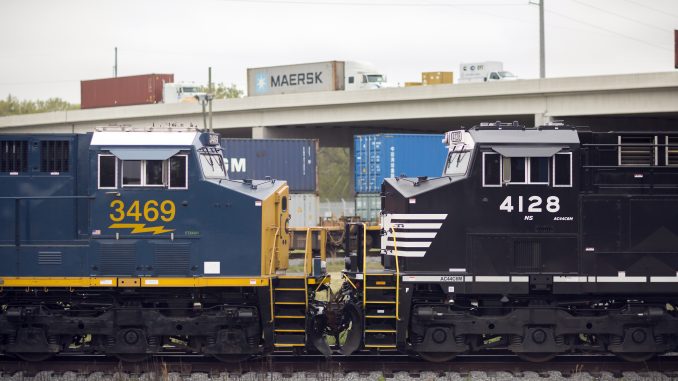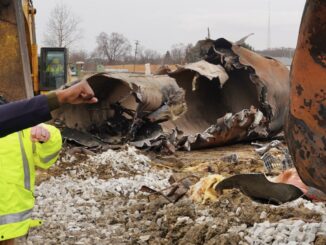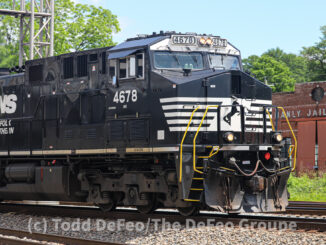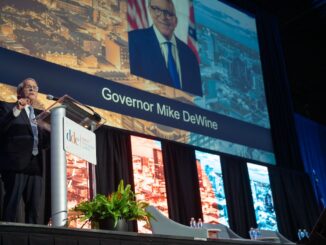
This story originally appeared on The Center Square.
Railroads in Ohio would have to operate trains with at least two crew members under a bill state lawmakers are considering.
The move comes after the Federal Railroad Administration (FRA) indicated it would not regulate the size of train crews, saying “no regulation of train crew staffing is necessary or appropriate for railroad operations to be conducted safely at this time.”
Currently, at least 10 states either have or are considering legislation requiring at least two-person train crews, state Rep. Michael Sheehy, D-Oregon, told members of the House Transportation and Public Safety Committee. In addition to the crewmember requirement, House Bill 186 would require several other safety measures.
“Historically members of a freight railroad crew consisted of an engineer, a fireman, a conductor and two switchmen – a five-man crew,” Sheehy, who worked in the railroad industry for 40 years, said. “With advances in technology, that crew size has been reduced to just a conductor and an engineer – a two-person crew.”
The bill would require the attorney general, at the request of the Public Utilities Commission (PUCO), to bring a civil action against railroads.
The bill sets penalties at $250 to $1,000 for the first violation, $1,000 to $5,000 for a second violation within three years of the first and $5,000 to $10,000 for subsequent violations within three years of the first. The state would deposit any fines into the Public Utilities Fund.
“Railroads are a very important part of commerce, but if you start thinking about what’s carried in a rail car … what kind of havoc that could wreak on your districts and on your communities, I think it is a commonsense solution to require a two-man train crew,” state Rep. Brett Hudson Hillyer, R-Uhrichsville, told committee members.
Railroads are likely to oppose any regulation of train crews.
Representatives for Norfolk Southern and CSX, two Class I railroads that operate in Ohio, did not immediately reply to a request for comment on the bill. On its website, Union Pacific, another Class I Railroad, said it “is not seeking to implement single-person crews at this time, but is opposed to legislation that would require two-person crews.”
HB 186 also requires railroads to install safety measures in their railyards and prohibits railroads from blocking grade crossings for any time if the block obstructs emergency vehicles.
As drafted, the state would require railroads to illuminate rail yards following standards established by the Illuminating Engineering Society of North America and construct walkways next to tracks wherever their employees regularly perform switching activities. The legislation allows railroad employees to file a complaint with PUCO to address a violation of the illumination requirement.
The bill imposes a fine of up to $100 for each day of each violation.
Another provision in the bill prohibits railroads from blocking public roads if the obstruction delays an emergency vehicle heading to an emergency. As drafted, railroads could face a civil penalty up to $5,000.
Ohio previously had a similar law in place, but a court ruled it violated federal law, Hillyer said. The lawmaker said he believed this version would withstand legal scrutiny.




